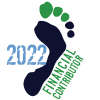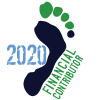Hello everyone,
I've semi-lurked for a bit, occasionally posting here and there, mainly in the injuries section. I thought, perhaps, it was time to take the plunge, so...here it is.
Like I mentioned in my intro, I'm a Pilates instructor. I teach fitness and restorative work, pre- and post-natal. Like many Pilates people, I came from a dance background and have had way more injuries in my life than I'd like to admit.
I stumbled on BFR about a year ago, and there's been no turning back. It's as good a high as dancing, but it goes on longer.

I'm in a program through Balanced Body University called "Pass The Torch" where I'm studying with Pilates Master Teacher, Elizabeth Larkam (who now has the link to this site, so she may show up here at some point). We've been talking about and working on ideas about barefoot gait and helping people to work towards healthy BFR. One of the things that we've been looking into is how the core works to support healthy, painless gait while BFR. Beyond feet, legs and hips, the core works differently during BFR and walking than in shoes. We're starting from the idea that (to restate something said often) people used to naturally have that strength and constantly trained it because they were shod more minimally. Since "supportive" shoes became the norm our core strength has gone steadily downhill along with our posture and feet. I believe that this core strength is harder to get back than it seems because we don't have any models to reteach us that muscle memory. My goal is for everyone to avoid the dreaded transitional TMTS injuries that happen as runners work their way back into that strength. One day there will be so many people skilled at BFR that everyone will run barefoot from childhood and be able to take that power for granted.
It looks like many here are having their journeys with these issues.
I'd love to hear peoples' thoughts about the core, gravity and their experiences running, whether you do core work and if so, what you do and whether/how it helped you.
I don't know too many BF runners here, but I'd love to give some very discounted Pilates sessions to folks who are already running if you're close enough to our San Francisco studio to come visit. I'm writing something at the moment and the resulting material will be a part of that. It may be a book. Or a workshop. Something like that. It might just be a lifetime of work with BF runners.
Let me know.
I've semi-lurked for a bit, occasionally posting here and there, mainly in the injuries section. I thought, perhaps, it was time to take the plunge, so...here it is.
Like I mentioned in my intro, I'm a Pilates instructor. I teach fitness and restorative work, pre- and post-natal. Like many Pilates people, I came from a dance background and have had way more injuries in my life than I'd like to admit.
I stumbled on BFR about a year ago, and there's been no turning back. It's as good a high as dancing, but it goes on longer.

I'm in a program through Balanced Body University called "Pass The Torch" where I'm studying with Pilates Master Teacher, Elizabeth Larkam (who now has the link to this site, so she may show up here at some point). We've been talking about and working on ideas about barefoot gait and helping people to work towards healthy BFR. One of the things that we've been looking into is how the core works to support healthy, painless gait while BFR. Beyond feet, legs and hips, the core works differently during BFR and walking than in shoes. We're starting from the idea that (to restate something said often) people used to naturally have that strength and constantly trained it because they were shod more minimally. Since "supportive" shoes became the norm our core strength has gone steadily downhill along with our posture and feet. I believe that this core strength is harder to get back than it seems because we don't have any models to reteach us that muscle memory. My goal is for everyone to avoid the dreaded transitional TMTS injuries that happen as runners work their way back into that strength. One day there will be so many people skilled at BFR that everyone will run barefoot from childhood and be able to take that power for granted.
It looks like many here are having their journeys with these issues.
I'd love to hear peoples' thoughts about the core, gravity and their experiences running, whether you do core work and if so, what you do and whether/how it helped you.
I don't know too many BF runners here, but I'd love to give some very discounted Pilates sessions to folks who are already running if you're close enough to our San Francisco studio to come visit. I'm writing something at the moment and the resulting material will be a part of that. It may be a book. Or a workshop. Something like that. It might just be a lifetime of work with BF runners.
Let me know.









